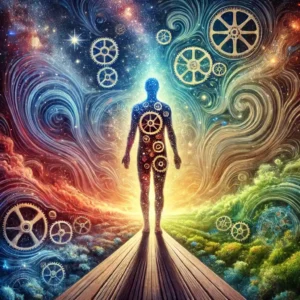The connection between the world of Atzilut (Emanation) and the world of Asiyah (Action) in Judaism represents the link between the highest spiritual realms and the physical world.
It reflects the tension between lofty ideas and their realization in practical life.
The world of Atzilut is known as a realm of divine unity, a place of pure divine light without separation or dissonance.
It is the source of all goodness in the world.
Atzilut and Asiyah
In the highest realm of Atzilut, divinity is revealed and exists in complete harmony with reality.
In contrast, in the world of Asiyah (practicality), there is a hiddenness of divine light, where humans are tasked with bringing holiness into the mundane, uncovering the divine within the material.
Our work, as described in Hasidism and Kabbalah, is to draw inspiration from the world of Atzilut (its spiritual and conceptual nature) and express it in the world of Asiyah—to sanctify the mundane and transform the physical world into a vessel for divine goodness.
The Story in Rabbi Nachman of Breslov's tale, "The Lost Princess," reveals the deep connection between the realms of Atzilut and Asiyah.
The story tells of a king who lost his daughter, symbolizing the soul or the Shechinah (Divine Presence), and the search to find her. The journey to locate the princess represents humanity’s journey in this world—a path filled with challenges, setbacks, and triumphs, aimed at rediscovering a connection to the divine.
The princess, representing the spiritual world (Atzilut), has "fallen" into a reality of disconnection and exile—the material world (Asiyah).
The search for her symbolizes the effort to bring the higher light, lofty ideas, and connection with the divine into a reality that seems distant from it.
This journey requires courage, faith, and good deeds to reveal the divine presence within the physical world.
The Connection to Our World
The story illustrates a process where a person begins with a sense of loss and hiddenness of divine light—a feeling of separation from God in the physical world. Yet, it is precisely in this world that they have the opportunity to redeem the "lost princess" (the soul or the Shechinah)—to restore holiness and spirituality into their life and connect ideology with action, transforming reality.
In this sense, the message of the story also applies to a person’s actions in the world of Asiyah: to strive to bring holiness and divine unity into every deed, inspired by the world of Atzilut—manifesting lofty ideas in all aspects of life.
For personal guidance or a lecture:
Miriam Drori
054-804-8602


